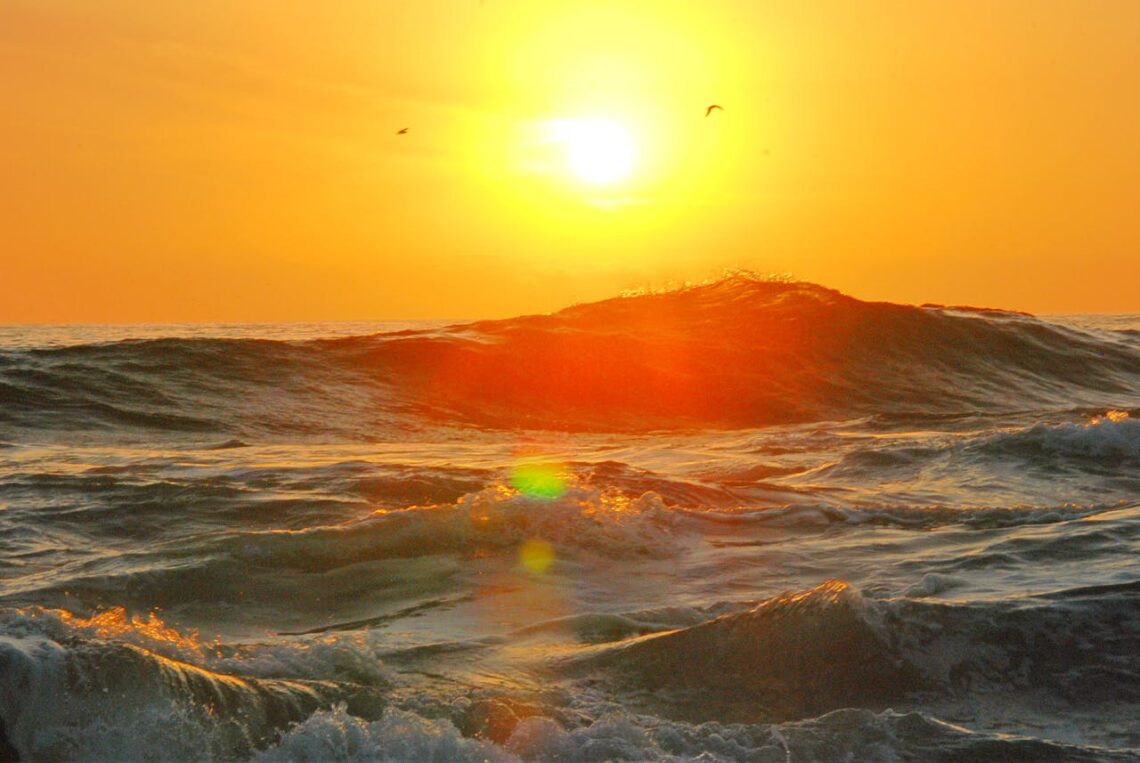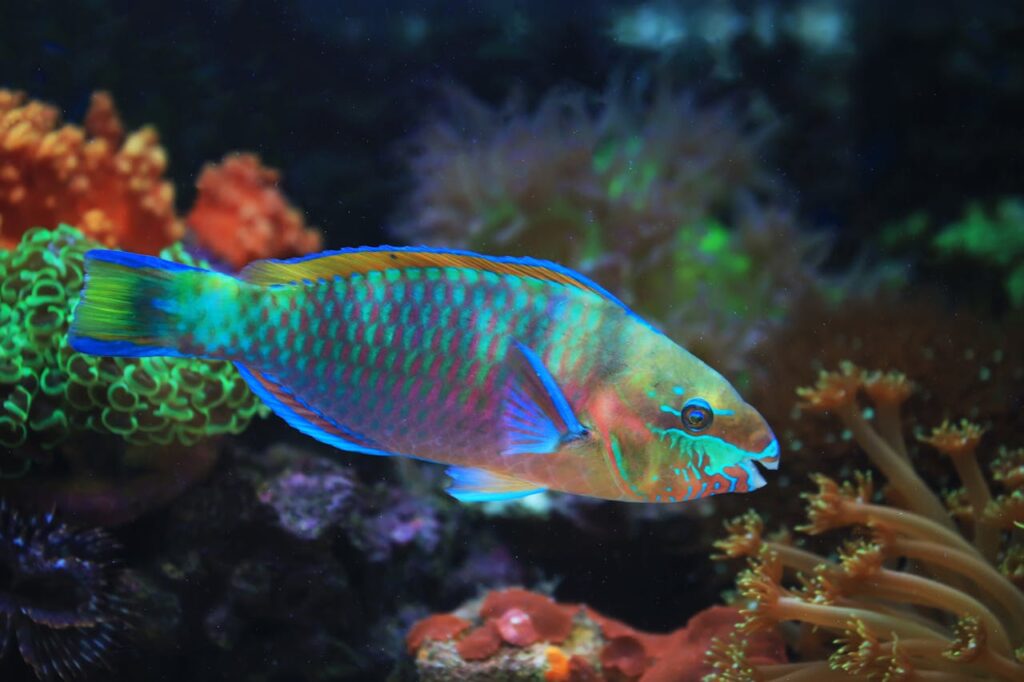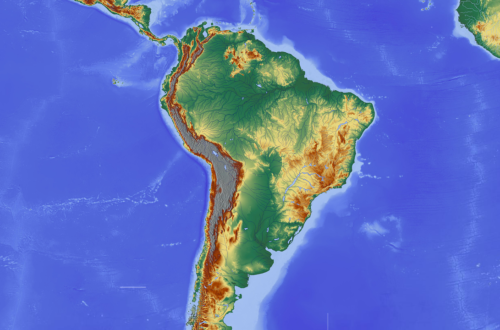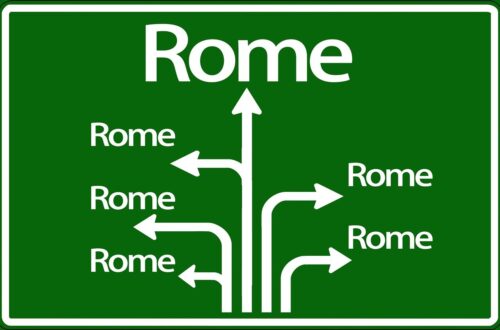
50+ Amazing Facts About the Pacific Ocean You Need to Know
Facts About the Pacific Ocean
Among the world’s oceans, none captures the imagination quite like the Pacific Ocean. As the largest and deepest ocean on Earth, it covers more than half of the earth’s surface area and holds more water than all the other oceans combined. Known by some as the “peaceful sea,” this vast body of water has shaped human history, influenced climate patterns, and supported an incredible diversity of marine life for centuries. Through these carefully researched facts about the Pacific Ocean, a clearer understanding of its global importance can be gained.
Moreover, curiosity about this vast ocean is not new. Since the time of Spanish explorer Vasco Núñez de Balboa, who first glimpsed it in the early 16th century, and Portuguese explorer Ferdinand Magellan, who later named it Mar Pacífico or “peaceful sea,” countless sailors, scientists, and adventurers have been drawn to its mysteries. Today, the Pacific remains both a source of inspiration and a reminder of how interconnected our planet truly is.
Therefore, this article explores fascinating details about its geography, marine ecosystems, human activities, and enduring role in shaping weather patterns and climate systems.
Along the way, you will discover how the Pacific Ocean compares with the Atlantic Ocean, why the Mariana Trench is famous, and what makes the Great Pacific Garbage Patch one of the most concerning human-created problems in modern history.
The Immense Size of the Pacific Ocean

Measuring the Vast Body of Water
Interestingly, the Pacific Ocean is the world’s largest ocean, stretching across an estimated 63 million square miles (165 million square kilometers). Covering nearly one-third of Earth’s surface, it surpasses not only the Atlantic Ocean but also the Indian Ocean, Arctic Ocean, and Southern Ocean combined.
- Its total volume of water is approximately 187 quintillion gallons.
- It extends from the Bering Strait in the north to the icy waters of the Southern Ocean.
- It borders continents of Asia, North America, South America, and Australia, making it truly global in reach.
Moreover, when compared to landmasses, the Pacific Ocean alone is larger than all the continents combined. This simple but astonishing fact about the Pacific Ocean highlights its dominance over Earth’s geography.
The Pacific Basin and Ocean Floor
In addition, the Pacific Basin is not just wide but also profoundly deep. Its ocean floor is characterized by volcanic activity, trenches, and ridges created by constantly shifting tectonic plates. The Pacific Plate, the largest of all tectonic plates, plays a critical role in shaping the Pacific Ring of Fire, a region known for frequent earthquakes and volcanic eruptions.
Because of these geological features, the ocean floor of the Pacific is far from calm waters. Instead, it is marked by dramatic landscapes hidden beneath warm ocean water, from undersea mountains like Mauna Kea in Hawaii to the deepest trenches in the world.
The Deepest Point on Earth
Mariana Trench and Challenger Deep
Of all the fascinating facts about the Pacific Ocean, perhaps the most famous is that it contains the deepest point on Earth. The Mariana Trench, located east of the Mariana Islands, plunges nearly 36,000 feet (about 10,994 meters) below sea level. Within this trench lies Challenger Deep, a spot that represents the deepest point ever measured in the world’s oceans.
- Challenger Deep is deeper than Mount Everest is tall.
- Pressures at this depth are over 1,000 times greater than at sea level.
- Only a handful of manned submersibles have ever reached it.
Therefore, the Pacific Ocean is not only the biggest ocean but also the deepest ocean, containing mysteries that remain largely unexplored.
Unique Marine Life in the Pacific

Biodiversity Across Vast Waters
Furthermore, the Pacific Ocean supports some of the richest biodiversity on the planet. Coral reefs such as the Great Barrier Reef off Australia, a UNESCO World Heritage Site, teem with colorful fish, sea turtles, and countless other species. Meanwhile, the Galapagos Islands and Solomon Islands host unique wildlife, much of which cannot be found anywhere else.
- Endangered species like sea lions, sea otters, and certain types of whales depend on its habitats.
- Coral reefs and marine ecosystems play a vital role in protecting coastlines and maintaining global climate systems.
- Warm ocean water of the South Pacific Ocean fosters an environment for diverse marine life, while colder currents in the North Pacific Ocean provide habitats for different species.
I’d recommend reading this article 60 Fascinating Facts About Sea Otter: The Best Guide next.
In addition, marine debris and human activities such as overfishing, pollution, and climate change continue to challenge the survival of many species. Among the most concerning is the Great Pacific Garbage Patch, a massive accumulation of marine debris floating in the North Pacific Gyre.
Weather Patterns and Global Climate
Influence on Global Climate Systems
Surprisingly, the Pacific Ocean plays a pivotal role in regulating weather patterns and global climate systems. Because it is the largest ocean, its warm ocean water and ocean currents distribute heat around the globe, influencing rainfall, storms, and even droughts across continents of Asia, North America, and South America.
- Ocean currents in the eastern Pacific affect temperatures along the coasts of North and South America.
- Trade winds move in a clockwise direction in the Northern Hemisphere and counterclockwise in the Southern Hemisphere.
- Shifts in temperature and current flow lead to powerful climate phenomena.
Moreover, events like El Niño and La Niña, which are irregular shifts in ocean temperatures, can drastically alter global weather patterns. During El Niño years, flooding may occur in some regions, while droughts devastate others. Conversely, La Niña often brings stronger hurricanes and colder winters in parts of the United States.
Climate Change Concerns
In addition, the Pacific Ocean has become a central focus in discussions about climate change. Rising sea levels threaten Pacific Islands such as Papua New Guinea and the Solomon Islands, where communities already face displacement. Coral reefs, including the Great Barrier Reef, are experiencing bleaching caused by warming seas.
Because the Pacific holds so much of Earth’s water, even minor temperature increases lead to significant changes in global weather and ocean circulation. Therefore, the protection of this vast ocean is directly tied to humanity’s future.
Exploration and Human History

First Encounters and Naming of the Pacific
Historically, one of the most important facts about the Pacific Ocean is its early discovery by European explorers. In 1513, Spanish explorer Vasco Núñez de Balboa was the first European to see the eastern Pacific after crossing the Isthmus of Panama. Later, in 1520, Portuguese explorer Ferdinand Magellan became the first to navigate the straits of Magellan, entering the calm waters of the Pacific.
Because of the calmness he experienced, Magellan named it Mar Pacífico, meaning peaceful sea. However, many sailors who followed would discover that the Pacific Ocean could be anything but peaceful during storms and typhoons.
The Role of Cartographers and Maps
Interestingly, maps of the Pacific Ocean began appearing in the 16th century thanks to cartographers like Abraham Ortelius. By the 18th century, the Pacific had become a major route for trade, exploration, and colonization. The Spice Islands and other Pacific Islands were highly valued for trade, especially during Europe’s expansion into Southeast Asia.
Furthermore, human activities during these centuries forever changed the Pacific region. New Zealand, the Galapagos Islands, and Pacific Islands became centers of cultural exchanges as well as conflict.
The Pacific Ocean vs. Other Oceans
Comparisons With the Atlantic Ocean
When compared to the Atlantic Ocean, the Pacific is nearly twice as large. Covering 63 million square miles, it dwarfs the Atlantic’s 41 million square miles. Moreover, the Pacific Ocean’s average depth is greater, making it both the biggest ocean and the deepest ocean.
- Atlantic Ocean: about 41 million square miles (106 million square kilometers).
- Pacific Ocean: about 63 million square miles (165 million square kilometers).
- Average depth of the Pacific: 12,080 feet.
- Average depth of the Atlantic: 10,930 feet.
Therefore, while the Atlantic Ocean connects Europe, Africa, and the Americas, the Pacific stretches much farther, influencing not only trade but also global climate.
Geological Wonders Beneath the Surface
Volcanic Activity and the Pacific Ring of Fire
In addition to its immense size, the Pacific Ocean is known for dramatic volcanic activity. The Pacific Ring of Fire, which surrounds much of the Pacific Basin, is home to 75% of the world’s active volcanoes. This area is shaped by shifting tectonic plates that constantly reshape the ocean floor.
- Subduction zones create deep ocean trenches.
- Volcanic islands such as Hawaii and the Mariana Islands were formed over millions of years.
- Earthquakes and tsunamis are frequent in the western Pacific Ocean and eastern Pacific coasts.
Moreover, Mauna Kea in Hawaii, if measured from its base on the ocean floor, is taller than Mount Everest. This fact about the Pacific Ocean emphasizes how much of its true landscape remains hidden beneath the waves.
Environmental Challenges Facing the Pacific

The Great Pacific Garbage Patch
Unfortunately, one of the most troubling facts about the Pacific Ocean is the existence of the Great Pacific Garbage Patch. Located within the North Pacific Gyre, this massive area of floating marine debris is estimated to be twice the size of Texas. Because ocean currents naturally concentrate plastic waste, the patch continues to grow.
- Marine debris consists of discarded fishing nets, plastic bottles, and microplastics.
- Sea lions, sea otters, and other marine life often mistake plastic for food.
- Cleanup efforts remain limited due to the patch’s size and remoteness.
Moreover, human activities such as overfishing and pollution contribute to declining marine health. The Great Pacific Garbage Patch serves as a reminder of how human actions affect even the most remote parts of the world’s oceans.
Endangered Species in the Pacific
In addition, the Pacific Ocean is home to many endangered species. From sea turtles nesting on Pacific Islands to whales migrating across the South Pacific Ocean, these creatures face threats from habitat loss and climate change.
- Coral reefs, including those around the South China Sea and East China Sea, are under threat from warming waters.
- Endangered species such as certain sharks, dolphins, and seabirds struggle due to declining fish populations.
- UNESCO World Heritage Sites like the Great Barrier Reef highlight the urgent need for conservation.
Therefore, protecting biodiversity in the Pacific is not only essential for marine life but also for the health of Earth’s global climate systems.
Fascinating Geographical Features
Point Nemo: The Ocean’s Loneliest Place
Interestingly, one of the lesser-known facts about the Pacific Ocean is the existence of Point Nemo, considered the oceanic pole of inaccessibility. It is the point farthest from any land on Earth, lying over 1,450 nautical miles from the nearest island. Because of its isolation, astronauts aboard the International Space Station are often closer to it than any humans on Earth.
The Southern Pacific and Remote Islands
Moreover, the Southern Pacific is dotted with remote islands, including the Solomon Islands, Mariana Islands, and Galapagos Islands. These islands are not only rich in culture but also in biodiversity. Many serve as laboratories for studying evolution, as Charles Darwin discovered in the Galapagos.
Additionally, the Pacific Islands of Southeast Asia and Papua New Guinea play a critical role in regional economies and global trade. Their location at the crossroads of ocean currents has made them historically significant since the 18th century.
Cultural and Historical Importance
Pacific Exploration and Trade
From the 16th century onward, the Pacific became a hub for exploration and colonization. Spice Islands, located in Southeast Asia, drew explorers and traders from Europe. Moreover, the straits of Magellan provided an essential maritime route connecting the Atlantic Ocean to the Pacific.
- Vasco Núñez de Balboa is remembered for being the first European to reach the Pacific from the New World.
- Portuguese explorer Ferdinand Magellan proved the ocean could be crossed, though his journey highlighted the perils of such voyages.
- Later cartographers and explorers mapped regions from the western Pacific Ocean to the eastern Pacific, expanding global trade networks.
Influence on Modern Nations
Furthermore, the Pacific has shaped the growth of modern nations such as the United States, Japan, Australia, and New Zealand. Its ports have become central to global commerce, while its resources remain vital to economic development.
Because the Pacific covers half of the earth, its importance in trade, security, and cultural exchange cannot be overstated.
Scientific Discoveries and Ocean Research
Studying the Ocean Floor
In recent decades, advances in technology have allowed scientists to better explore the Pacific Ocean floor. Deep-sea submersibles have visited Challenger Deep, while remote-operated vehicles continue to discover new species near hydrothermal vents.
- The deepest trenches, including the Mariana Trench and Tonga Trench, reveal extreme environments.
- Critical mineral deposits are found in parts of the ocean floor.
- Volcanic activity and tectonic movements remain under close study due to their impact on weather and sea level.
Moreover, international cooperation has become vital in studying the Pacific, as its vast ocean basin affects climate, biodiversity, and human populations worldwide.
Ocean Currents and Their Impact

Circulation in the Pacific Basin
Among the most significant facts about the Pacific Ocean is its powerful system of ocean currents. These currents move vast volumes of water in a clockwise direction in the Northern Hemisphere and counterclockwise in the Southern Hemisphere. Because of these patterns, heat and nutrients are distributed across thousands of miles, influencing not only marine life but also human weather systems.
- The North Pacific Ocean circulation is shaped by the North Pacific Gyre.
- The South Pacific Ocean currents link directly to the Southern Ocean and Indian Ocean.
- Nutrient-rich cold waters rise along the coasts of South America, supporting diverse marine life.
Moreover, shifts in these currents are linked to large-scale phenomena such as El Niño and La Niña, both of which have dramatic effects on agriculture, fishing, and weather patterns across continents of Asia, North America, and South America.
I’d really appreciate it if you could read this article The Best 50 Facts About Hurricanes: Nature’s Powerful Storms when you have a moment. It’s related to what we’ve been discussing.
Role in Global Climate Systems
In addition, the Pacific Ocean plays a dominant role in balancing Earth’s climate. Because it covers such a large percentage of the earth’s surface area, the Pacific helps regulate temperatures worldwide. Its ocean currents act as massive conveyor belts, transferring warm ocean water from the western Pacific Ocean toward the eastern Pacific and beyond.
Therefore, changes in Pacific currents are closely monitored by scientists who study their effects on global climate systems, sea level rise, and long-term weather trends.
Interesting Facts About the Pacific Ocean
Friendly Quick Facts
To highlight some quick and engaging facts about the Pacific Ocean:
- The Pacific Ocean spans about 63 million square miles (165 million square kilometers).
- Challenger Deep in the Mariana Trench is the deepest point, at nearly 36,000 feet.
- Mauna Kea, rising from the ocean floor, is taller than Mount Everest.
- Point Nemo is the farthest place from any land on Earth.
- The Pacific Ocean holds more than half of Earth’s water.
- The Great Barrier Reef, located in the Pacific, is a UNESCO World Heritage Site.
- The Great Pacific Garbage Patch is twice the size of Texas.
Moreover, these simple facts about the Pacific Ocean can spark curiosity while reminding readers of its vast scale and ecological importance.
Human Activities and the Pacific

Modern Economic Importance
The Pacific Ocean continues to play a central role in the global economy. Shipping routes across the North Pacific Ocean connect the United States with Asia, while trade from the South Pacific Ocean links Australia, New Zealand, and Southeast Asia with other continents.
- Fisheries provide food and employment for millions.
- Ports in the eastern Pacific and western Pacific regions remain vital for trade.
- Pacific Islands rely heavily on the ocean for cultural identity and economic survival.
Furthermore, critical mineral deposits and energy resources are being explored in the Pacific Basin. However, these activities raise concerns about long-term environmental damage.
Challenges from Human Activities
In addition, human activities such as overfishing, plastic pollution, and habitat destruction have placed enormous pressure on the Pacific Ocean. Marine debris continues to accumulate, while coral reefs suffer from warming waters and bleaching.
Because the Pacific is such a vast ocean, the impact of these challenges can often go unnoticed. Yet the long-term consequences affect global climate systems, marine life, and even human food security.
The Pacific Ocean in Culture and Imagination
Symbolism and Inspiration
Throughout history, the Pacific has symbolized both opportunity and danger. Known to early explorers as the peaceful sea, it was romanticized in literature and art. However, it has also been associated with storms, typhoons, and shipwrecks.
Moreover, Pacific Islands cultures have thrived for thousands of years, relying on knowledge of ocean currents, weather patterns, and navigation by stars. These traditions reveal a deep respect for the vast body of water that sustains them.
Endangered Beauty and Conservation Efforts
Protecting Coral Reefs and Marine Life
Among the most urgent facts about the Pacific Ocean is the need to protect its coral reefs, fish populations, and endangered species. Coral reefs across the South Pacific Ocean and eastern Pacific serve as nurseries for countless marine species. However, warming seas, overfishing, and human activities threaten these fragile ecosystems.
- Coral reefs like the Great Barrier Reef face bleaching events due to climate change.
- Sea lions, sea otters, and whales remain at risk from marine debris and habitat loss.
- Conservation groups work to protect UNESCO World Heritage Sites and critical habitats.
Moreover, international agreements now focus on reducing overfishing and cutting down on plastic pollution, which continues to endanger marine life in the Pacific Basin.
If you have some free time, it might be helpful to check out this article The Best 101 Facts About Fish: Fascinating Depths. It covers some relevant points.
Fun and Lesser-Known Pacific Ocean Facts
Surprising Points of Interest
In addition to its massive size and depth, the Pacific is full of surprising details:
- The Pacific Ocean covers more area than all land on Earth combined.
- Half of the earth’s surface water is contained in this single ocean.
- Mount Everest could sink into the Mariana Trench with room to spare.
- The Pacific Ocean touches five continents: Asia, North America, South America, Australia, and Antarctica.
- Mauna Kea, if measured from its ocean floor base, surpasses Mount Everest’s height.
- Human exploration of the deepest trenches has barely begun.
- The Pacific Ocean is home to some of the world’s most critical mineral reserves.
- “Mar Pacífico,” or peaceful sea, was the original name given by Ferdinand Magellan.
Therefore, learning these quick facts about the Pacific Ocean helps bring its vast scale and mystery into perspective.
Facts About the Pacific Ocean: Frequently Asked Questions (FAQs)

Why is the Pacific Ocean called the peaceful sea?
It was named Mar Pacífico by Portuguese explorer Ferdinand Magellan in the 16th century because of the calm waters he experienced while crossing it.
What is the deepest point in the Pacific Ocean?
The deepest point is Challenger Deep, located in the Mariana Trench, reaching nearly 36,000 feet below sea level.
How big is the Pacific Ocean compared to the Atlantic Ocean?
The Pacific Ocean covers about 63 million square miles, making it nearly twice as large as the Atlantic Ocean’s 41 million square miles.
What are some major islands in the Pacific?
Notable islands include the Galapagos Islands, Solomon Islands, Mariana Islands, New Zealand, and numerous Pacific Islands across Southeast Asia.
What role does the Pacific play in global climate?
The Pacific influences global climate systems through ocean currents, El Niño and La Niña events, and by regulating Earth’s overall heat balance.
What is the Great Pacific Garbage Patch?
It is a massive accumulation of floating plastic and marine debris trapped by currents in the North Pacific Gyre.
Is the Pacific Ocean still growing?
Yes, because of tectonic plate movements, parts of the Pacific Basin continue to shift, while some boundaries shrink due to subduction zones.
Facts About the Pacific Ocean Conclusion
Ultimately, the Pacific Ocean is not just the world’s largest ocean but also its most influential. Covering half of the earth and extending across the Southern Hemisphere and Northern Hemisphere alike, it shapes climate, sustains marine life, and has guided human history from the voyages of Vasco Núñez de Balboa to today’s modern trade routes.
Moreover, its mysteries—from Challenger Deep to Point Nemo—continue to fascinate scientists and explorers. Yet alongside its beauty lies responsibility: protecting coral reefs, reducing marine debris, and safeguarding endangered species are critical for the health of this vast ocean.
If it’s not too much trouble, I’d recommend reading this article 71 Fascinating Facts About Sharks: Masters of the Ocean. It could add some valuable context to our discussion.
Therefore, by understanding these facts about the Pacific Ocean, a deeper appreciation can be gained not only for its immense scale but also for its role in keeping our planet alive.




